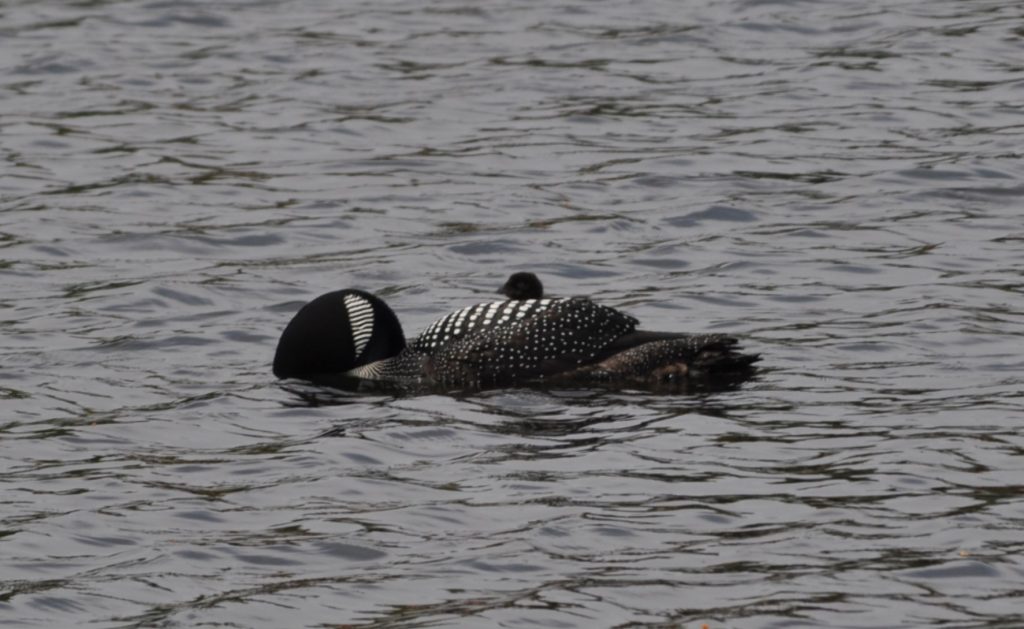Getting the Lead Out
This week, Martha Robertson, National Participant Coordinator, takes us on an adventure that leads to getting the lead out.
—
The message had come in: meet at 8:30 pm at the pre-designated spot. I was the second person to arrive. Waiting for the others to show, my attention was split between speculative curiosity of what this outing would bring and the magic of watching the dusk seep into the lake, an invisible seam binding them into one. As soon as everyone was assembled, the Leaders of this exercise gave the rest of us our assignments and instructions for how our operation would play out.
The boat was released from the trailer into the water; some of the gear that had been brought in the truck was packed into it, other equipment was arranged in a logical layout on the shoreline. All was set to go; we were just waiting for full darkness to prevail for the maneuver to begin. There was no moon to share the heavenly stage, so the constellations were, quite literally, the stars of the evening show, as we impatiently shuffled our feet, eager to get underway.
A crew of five got aboard, and the boat moved stealthily away from the landing area—there were no lights on the utility vessel and the engine was running almost at the same volume as the hum of the mosquitoes. Even with straining all of our senses, those of us left on the ramp could barely place the location of the boat on the water. Suddenly, the darkness was cleaved by a cone of bright white light that originated from the middle of the water and emanated out to skim over the ripples and touch the shorelines. The spotlight made slow arcs across the water, illuminating everything in its path. After a few minutes, the silence that we were wrapped in was shattered. The sound was piercing as it carried across the lake and echoed around the hills. The calls were eerie, unearthly, and undeniably distinct. And then they just stopped. All was hushed again; the light went off. A few minutes later, the boat suddenly had snuck back into the launching area.
The team disembarked, and the Leader moved quickly, his arms cradling a large wrapped bundle that he carried with an equal measure of strength and gentleness, as he made his way to where the equipment had been carefully assembled on the sand. Mission accomplished! With the removal of the towel that had been covering it, the object of the excursion was revealed: a large male loon!
Then began the research component of the plan. The leader, the senior biologist with New Hampshire Loon Preservation Committee (LPC), was replacing the bands on this loon that had first been attached to his legs in 1998. (From the old bands, the LPC determined that this handsomely-decked fellow was 27 years old—one of only 13 in NH over the age of 20!) In addition to banding and weighing the bird (approx. 12.5 lbs.), the team collected blood samples and snipped secondary feathers (not impacting flight) for testing. With precision born of practice and expertise, the biologists carefully and deliberately performed their tasks and then again swaddled the loon in towels, carried him into the water, and released him. His familiar wail was a reassuring aria that broke the stillness, as he called out to his mate who was swimming elsewhere on the lake with their one surviving chick. (Loons successful in mating have one or two chicks. This pair started with two but now had one.)
Now It was time for round two: repeat the same procedures for the female loon. And on this ride, I got the opportunity to go out on the boat with the team!

This was a scheduled visit for the LPC and it had a predictable outcome. However, not all of their field (er, lake) trips are routine or happy. A couple of weeks later, the biologists had received a call that a loon on another lake had its bill wrapped in fishing line, wrapped so deeply that it cut into the skin. If unable to open its bill, the bird can’t eat or waterproof its feathers and it can die from emaciation and being waterlogged in a week. Should the loon be part of a nesting pair with a chick (or two), this could have a dramatic impact on the hatchling’s survival.
Ingestion of lead from fishing tackle is the leading cause of adult loons in NH. Once swallowed and acted on by the bird’s digestive system, the toxins are released into the bloodstream and organs. The poison from one split-shot lead sinker can kill a loon in 2-4 weeks.
Lead fishing tackle is illegal in some states. (Is it in yours?) Bans on lead (in fishing tackle and ammunition) on federal lands have been proposed, sparking contentious debates.
Alternative metals are now available to replace lead sinkers and jigs. If your tackle incorporates lead, consider phasing it out or switching it. If you see fishing line in the water or along the shore, tuck it safely away in your pocket. The impacts of lead (and line) are far-reaching, well beyond the fate of loons alone.
We are so fortunate to have nature and wildlife to interact with and to witness. It’s incumbent upon us to be thoughtful stewards of these gifts. For an interesting story about loons and lead, click HERE. There are also recordings of three of the loons’ well-known calls!
Note: I am a local volunteer for the LPC, which is why I was lucky enough to be part of this narrative. Did I tell you the one about rescuing the baby loon yet . . .






